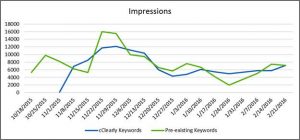Southeast Asia has its online revolution right now. According to the global consulting organization Bain & Company’s 2019 report, 310 million of the region’s consumers will go digital by 2025.
However, the firm underestimated how fast the region’s consumers are adopting digital services. In an August study from Bain & Company in collaboration with Facebook, titled “Digital Consumers of Tomorrow, Here Today,” Southeast Asia is expected to reach 310 million digital consumers (nearly 70% of the region’s population) by the end of 2020, five years earlier than the analysts forecasted in the previous report.
Exceeding the previous forecast of $ 392, the firm’s new report predicts the average digital spending per person to rise from 2018’s $ 124 to $ 429 by 2025, representing a nearly 250% increase throughout the period.
The study – which surveyed over 16,000 digital consumers in ASEAN countries like Malaysia, the Philippines, Thailand, Vietnam, Indonesia, and Singapore – revealed that cash transactions fell from 2019’s 40% to 34% in 2020 despite the region’s heavy reliance on the payment method. On the other hand, while card transactions (-0.3%) and bank transfers (-1%) remained nearly unchanged, e-wallet usage rose to 22% from last year’s 14%.
Based on the above data, the region is increasingly adopting e-wallet solutions, which currently stand as the third most popular payment method in Southeast Asia, just under credit and debit cards (23%).
ASEAN to Compete With China’s Digital Wallet Adoption
China has been leading Asia in terms of digital adoption. The world’s most populous country has been experiencing a fintech boom that led to a rise in cashless payments among the nation’s citizens. However, in recent years, China witnessed the rise of a new, prominent competitor: Southeast Asia.
According to a May report by the Boston Consulting Group (BCG), 49% of Southeast Asia’s commercial bank customers also use digital wallet solutions. Moreover, the consulting group predicts that e-wallet adoption in the region will rise further in the coming years, forecasting the rate to reach 84% by the end of 2025.
Due to COVID-19, this trend could accelerate as the pandemic had already facilitated a boom in digital payments and home delivery, potentially leading to an increasing number of Southeast Asian households to embrace e-wallet services, the analysts stated.
In Southeast Asia, Malaysia is the leader in e-wallet adoption with a 40% usage, closely followed by the Philippines at 36%, while Thailand (27%) and Singapore (26%) rank third and fourth, respectively, MasterCard Impact Study 2020 revealed.
After surveying 10,000 consumers and business professionals across ten countries in the Asia Pacific, MasterCard discovered that nearly 50% of Malaysian consumers expanded their online shopping activities during the pandemic. In addition to eCommerce, the Asian nation saw a surge in news- and entertainment-related internet activities (75%), video streaming (57%), social networking (55%), and food and grocery home deliveries (50%).
A significant part of the surveyed Malaysians stated that they would continue their online shopping (64%), home delivery (54%), and work from home (45%) activities even after the restrictions are lifted.
MasterCard’s study also revealed a declining cash usage in ASEAN nations like Singapore (67%), the Philippines (64%), and Thailand (59%), indicating a shift to contactless payments among the region’s consumers.
E-Wallet Users Demand Fast and Cheap Transactions
[A]: In a recent survey among Asian customers, digital payments company STICPAY revealed the key consumer preferences for choosing an e-wallet solution. Based on the results, the region’s consumers consider fast withdrawals (32.2%) and low transaction fees (18.4%) the most crucial digital wallet features.
According to STICPAY, rapid and cost-efficient transfers were followed by prepaid cards (12.7%), local bank wire options (11.9%), diverse deposit methods (9.6%), safety and security (8.6%), cryptocurrency support (5.4%), as well as multi-currency features (1%) as important criteria when selecting an e-wallet solution. After surveying 400 participants in APAC nations – including the Philippines, Indonesia, Malaysia, Thailand, Singapore, and Hong Kong –, STICPAY also discovered that the respondents prefer to utilize e-wallet services for digital shopping, online gaming, and trading, among other use-cases.
[B]: In a recent survey among 400 participants in APAC nations – including the Philippines, Indonesia, Malaysia, Thailand, Singapore, and Hong Kong –, digital payments company STICPAY revealed the key consumer preferences for choosing an e-wallet solution. Based on the results, the region’s consumers consider fast withdrawals (32.2%) and low transaction fees (18.4%) the most crucial digital wallet features.
According to STICPAY, rapid and cost-efficient transfers were followed by prepaid cards (12.7%), local bank wire options (11.9%), diverse deposit methods (9.6%), safety and security (8.6%), cryptocurrency support (5.4%), as well as multi-currency features (1%) as important criteria when selecting an e-wallet solution.
Digital Wallet Solutions to Expand Their Services
In the past few years, e-wallet providers have been turning a major focus on expanding their services to fulfill surging consumer demands.
After offering top-up services for prepaid solutions and utility payments, Rapyd’s APAC Vice President Joel Yarbrough believes digital wallet solutions will soon introduce various cross-border and foreign exchange features to their customers.
According to the fintech provider’s Asia Pacific VP, digital wallet providers must expand their services with practical use-cases, including features that allow customers to settle in-store and online payments.
According to BCG analysts, despite the e-wallet boom in Southeast Asia, service providers have to face three main challenges: increasing merchant acceptance, making usage ubiquitous across populations, and upgrading customer loyalty and value.
Business & Finance Articles on Business 2 Community
(13)
Report Post






